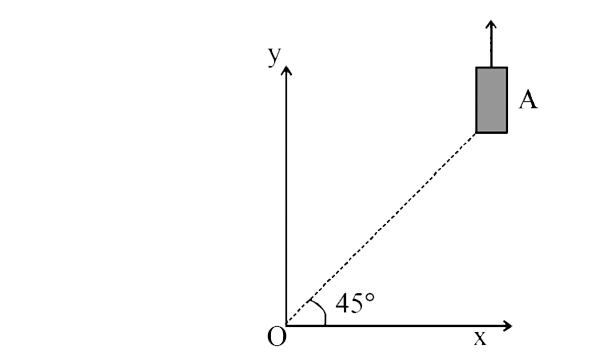Starting from rest, what will be Mahendra’s velocity after one second if he is falling down due to the gravitational force of the earth?
u = 0, F = 733 N, Mahendra’s mass = m = 75 kg time t = 1 s
Mahendra’s acceleration
a=Fm=73375 m/s2
According to Newton’s first equation of motion,
v = u + a t
Mahendra’s velocity after 1 second
v=0+9.77×1m/s
v = 9.77 m/s
This is 1.83×109 times Mahendra’s velocity in example 2, on page 6.
Topper's Solved these Questions
- BOOK - BAL BHARTICHAPTER - GRAVITATION EXERCISE - Can you recall?4videos
GRAVITATION
- BOOK - BAL BHARTICHAPTER - GRAVITATION EXERCISE - Use your brain power6videos
GRAVITATION
- BOOK - BAL BHARTICHAPTER - EFFECTS OF ELECTRIC CURRENT EXERCISE - Exercise17videos
EFFECTS OF ELECTRIC CURRENT
- BOOK - BAL BHARTICHAPTER - HEAT EXERCISE - Exercise22videos
HEAT
Similar Questions
In the above example, assuming that the bench on which Mahendra is sitting is frictionless, starting with zero velocity, what will be Mahendra's velocity of motion towards Virat after 1 s? Will this velocity change with time and how?
View SolutionSpheres A and B of uniform density have masses 1 kg and 100 kg respectively. Their centers are separated by 100m. (iv.) If A begins to fall, starting from rest, due to the earth's downward pull, what will be its velocity after one second ? How much time will it take to fall through 1 cm ?
[M(earth)=6×1024kg,R(earth)=6400km]View Solution
Knowledge Check
- Question 1 - Select One
What is the value of g? (g stands for acceleration due to gravitational force of the earth)
A5.2m/s2B9.8m/s2C7.8m/s2D6.7m/s2 - Question 2 - Select One
A particle starts from rest with uniform acceleration a. Its velocity after n seconds is v. The displacement of the particle in the two seconds is :
A2v(n−1)nBv(n−1)nCv(n+1)nD2v(2n+1)n - Question 3 - Select One
A body freely falling from rest has a velocity V after it falls through a height H. The distance it has to fall down further for its velocity to become double is
A3 HB2 HCHDH2
A gravitational force of 4.002×10−7 N is acting between mahendra (75kg) and virat (80kg). Assuming that the bench on which mahendra is sitting is frictionless, starting with zero velocity , what will be mahendra's velocity of motion towards virat after 1s? Will this velocity change with time and how ?
View SolutionThe centripetal force on a satellite revolving around the Earth is F. What is the gravitational force due to Earth on it ? Net force?
View SolutionOn a frictionless horizontal surface , assumed to be the x−y plane , a small trolley A is moving along a straight line parallel to the y−axis ( see figure) with a constant velocity of (√3−1)m/s . At a particular instant , when the line OA makes an angle of 45(∘) with the x− axis , a ball is thrown along the surface from the origin O. Its velocity makes an angle ϕ with the x− axis and it hits the trolley .
(a) The motion of the ball is observed from the frame of the trolley . Calculate the angle θ made by the velocity vector of the ball with the x−axis in this frame .
(b) Find the speed of the ball with respect to the surface , if ϕ=(4θ)/(3).
 View Solution
View SolutionA body freely falling from the rest has velocity v after it falls through a height h the distance it has to fall down for its velocity to become double is
View SolutionA body freely falling from the rest has velocity v after it falls through a height h the distance it has to fall down for its velocity to become double is
View Solution

